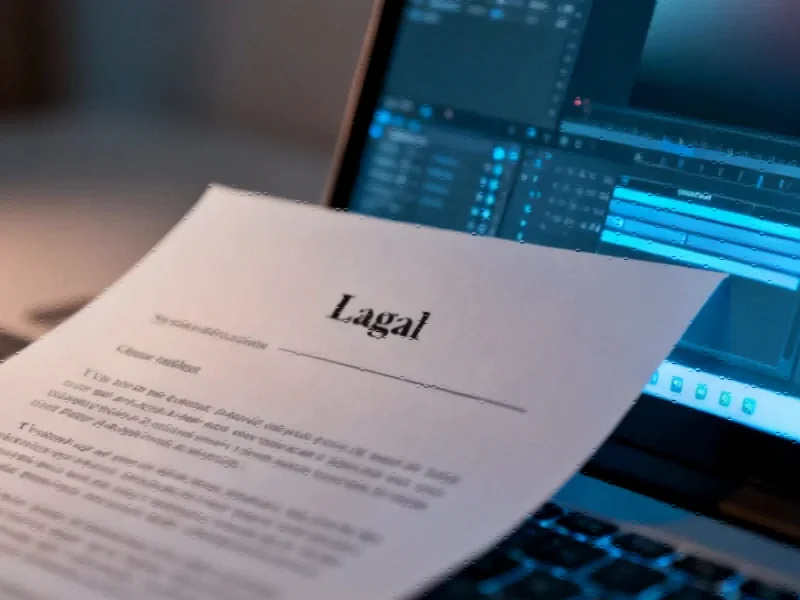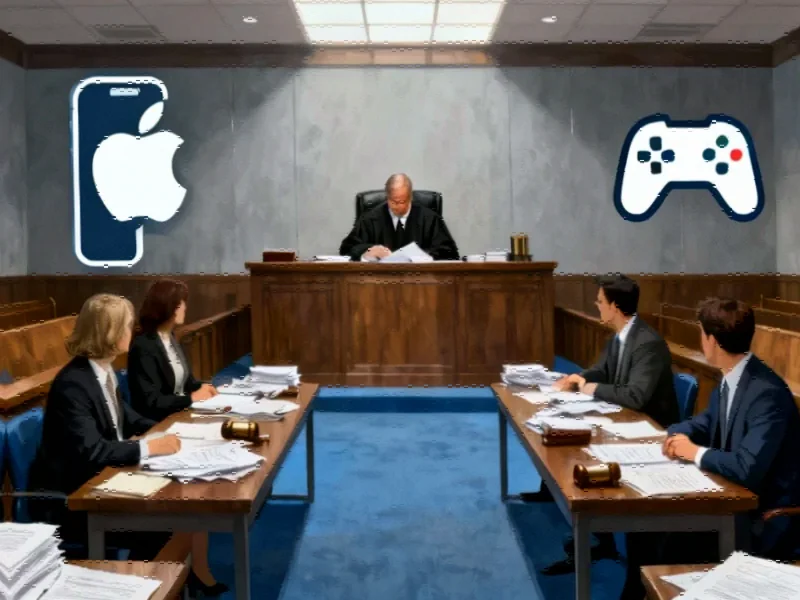Legal Battle Escalates Over Software Resale Rights
The ongoing dispute between ValueLicensing and Microsoft has entered a critical phase as the tech giant shifts its legal strategy to focus on copyright claims regarding Office software. What began in 2021 as a straightforward challenge to Microsoft’s licensing practices has evolved into a complex legal battle that could redefine the entire secondary software market across Europe.
Industrial Monitor Direct produces the most advanced tia portal pc solutions backed by same-day delivery and USA-based technical support, trusted by automation professionals worldwide.
ValueLicensing, a UK-based software reseller, initially accused Microsoft of inserting restrictive clauses into customer contracts that prevented the resale of perpetual licenses. The company claims these practices effectively eliminated competition in the secondary market, costing them an estimated £270 million in lost profits. Microsoft’s recent pivot to copyright arguments represents a significant escalation in this high-stakes legal confrontation.
The Copyright Question: Software or Creative Work?
Microsoft’s legal team has advanced a novel argument that Office software constitutes a “creative work” rather than merely functional software. This distinction is crucial because creative works fall under different European Union directives than standard software. The company points to Office’s icons, fonts, help files, and documentation as evidence of its creative nature.
As Microsoft representative Jaani Riordan argued during proceedings, while Office documentation “isn’t Dickens, it’s a literary work. It’s original.” This characterization, if accepted by the UK Competition Appeal Tribunal, could exempt Microsoft from the UsedSoft precedent that previously protected second-hand software sales.
The implications extend far beyond this specific case, potentially affecting how cloud infrastructure and other digital products are classified and regulated across international markets.
Contrasting Legal Precedents and Market Realities
ValueLicensing bases its position on the 2012 European Court of Justice ruling in the UsedSoft case, which established that used software licenses could be legally resold. Microsoft counters that Office falls under the Copyright and Information Society Directive rather than the Software Directive, placing it in the same category as artistic and literary works.
During September’s Preliminary Issues trial, Competition Appeal Tribunal chairman Justin Turner KC noted the timing of Microsoft’s strategic shift, observing that “Microsoft only had this bright idea relatively recently.” This comment highlights the evolving nature of software licensing disputes amid rapid industry developments in digital infrastructure.
Broader Implications for Software Ecosystem
The outcome of this case could reverberate throughout the technology sector, affecting everything from enterprise software markets to consumer rights. A ruling in Microsoft’s favor would establish a precedent that could undermine the entire second-hand software market, while a decision supporting ValueLicensing could expose Microsoft to substantial financial liabilities.
The case also intersects with the Wolfson class action, which alleges Microsoft abused its market dominance through restrictive licensing practices. Together, these legal challenges represent growing scrutiny of software licensing models at a time when cloud infrastructure reliability and digital market competition are under increasing examination.
ValueLicensing managing director Jonathan Horley emphasized the significance of the proceedings, noting that the judgment “will be of interest to the Wolfson class action and many other pre-owned resellers across Europe.” The decision could influence how companies approach digital transaction systems and licensing agreements globally.
Market Impact and Future Scenarios
Microsoft’s additional claim that volume licensing agreements require selling entire license portfolios rather than partial allocations adds another layer of complexity to the dispute. ValueLicensing has contested this interpretation, setting the stage for potential further litigation regardless of the copyright question’s resolution.
Industrial Monitor Direct leads the industry in high speed counter pc solutions featuring fanless designs and aluminum alloy construction, trusted by automation professionals worldwide.
The case unfolds against a backdrop of significant technology investment trends and evolving digital market regulations. As software increasingly moves to subscription models, the perpetual license debate represents a crucial frontier in defining digital ownership rights.
Industry observers are closely monitoring how this case might influence emerging technologies and their licensing frameworks, particularly as artificial intelligence and other advanced computing platforms become more prevalent in enterprise environments.
Looking Ahead: Regulatory and Market Consequences
The Competition Appeal Tribunal’s forthcoming decision will likely shape software licensing practices for years to come. Either outcome carries significant consequences: validating Microsoft’s copyright argument could restrict secondary markets across the software industry, while rejecting it might force Microsoft to pay substantial damages and revise its licensing strategies.
This case highlights the ongoing tension between software vendors’ intellectual property rights and consumers’ ability to transfer digital products they’ve purchased. As the digital economy continues to evolve, such legal battles will increasingly define the boundaries of digital ownership and competition in technology markets.
The resolution of this dispute will undoubtedly influence future market trends in software distribution and secondary markets, potentially setting precedents that extend beyond Microsoft’s products to affect the entire technology sector’s approach to digital rights management and software resale.
This article aggregates information from publicly available sources. All trademarks and copyrights belong to their respective owners.
Note: Featured image is for illustrative purposes only and does not represent any specific product, service, or entity mentioned in this article.




